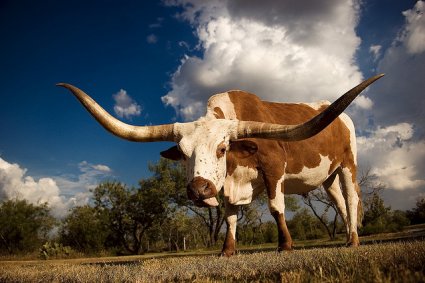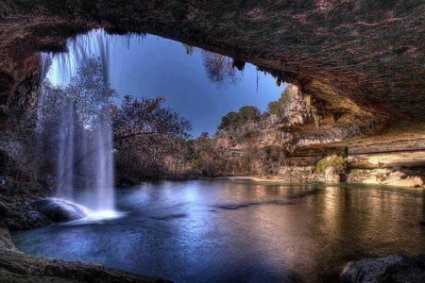US State of Texas
Texas is the second most populous (after California) and the second-largest of the 50 U.S. states (after Alaska) in the United States of America, and the largest state in the 48 contiguous United States. Geographically located in the south central part of the country, Texas shares an international border with the Mexican states of Chihuahua, Coahuila, Nuevo León, and Tamaulipas to the south and borders the U.S. states of New Mexico to the west, Oklahoma to the north, Arkansas to the northeast, and Louisiana to the east.
Houston is the largest city in Texas and the fourth-largest in the United States, while San Antonio is the second largest in the state and seventh largest in the United States. Dallas–Fort Worth and Greater Houston are the fourth and fifth largest United States metropolitan areas, respectively. Other major cities include El Paso and Austin—the state capital. Texas is nicknamed the Lone Star State to signify Texas as a former independent republic and as a reminder of the state's struggle for independence from Mexico. The "Lone Star" can be found on the Texas state flag and on the Texas state seal today. The origin of the state name, Texas, is from the word, "Tejas", which means 'friends' in the Caddo language.
Due to its size and geologic features such as the Balcones Fault, Texas contains diverse landscapes that resemble both the American South and Southwest. Although Texas is popularly associated with the Southwestern deserts, less than 10 percent of the land area is desert. Most of the population centers are located in areas of former prairies, grasslands, forests, and the coastline. Traveling from east to west, one can observe terrain that ranges from coastal swamps and piney woods, to rolling plains and rugged hills, and finally the desert and mountains of the Big Bend.
The term "six flags over Texas", as can be seen in the Grand Prairie-based large national and international amusement park operator Six Flags, came from the several nations that had ruled over the territory. Spain was the first European country to claim the area of Texas. France held a short-lived colony in Texas. Mexico controlled the territory until 1836 when Texas won its independence, becoming an independent Republic. In 1845 it joined the United States as the 28th state. The state's annexation set off a chain of events that caused the Mexican–American War in 1846. A slave state, Texas declared its secession from the United States in early 1861, and officially joined the "Confederate States of America" on March 2 of the same year. After the consequent Civil War and the restoration of its representation in the federal government, Texas entered a long period of economic stagnation.
A wide range of animals and insects live in Texas. It is the home to 65 species of mammals, 213 species of reptiles and amphibians, and the greatest diversity of bird life in the United States—590 native species in all. At least 12 species have been introduced and now reproduce freely in Texas. Texas plays host to several species of wasps. Texas is one of the regions that has the highest abundance of Polistes exclamans. Additionally, Texas has provided an important ground for the study of Polistes annularis. During the spring Texas wildflowers such as the state flower, the bluebonnet, line highways throughout Texas. During the Johnson Administration the first lady, Lady Bird Johnson, worked to draw attention to Texas wildflowers.


Education in Texas
See more on Study in Texas
The second president of the Republic of Texas, Mirabeau B. Lamar, is the Father of Texas Education. During his term, the state set aside three leagues of land in each county for equipping public schools. An additional 50 leagues of land set aside for the support of two universities would later become the basis of the state's Permanent University Fund. Lamar's actions set the foundation for a Texas-wide public school system. Texas ranked 29th in the American Legislative Exchange Council's Report Card on American Education. Texas students ranked higher than average in mathematics, but lower in reading.
Students in Texas take the State of Texas Assessments of Academic Readiness (STAAR) in primary and secondary school. TAKS assess students' attainment of reading, writing,mathematics, science, and social studies skills required under Texas education standards and the No Child Left Behind Act. The test replaced the Texas Assessment of Knowledge and Skills (TAKS) test in the 2011–2012 school year.
Texas has over 1,000 public school districts—all but one of the school districts in Texas are independent, separate from any form of municipal government. School districts may (and often do) cross city and county boundaries. Independent school districts have the power to tax their residents and to assert eminent domain over privately owned property. The Texas Education Agency (TEA) oversees these districts, providing supplemental funding, but its jurisdiction is limited mostly to intervening in poorly performing districts.
Thirty-six (36) separate and distinct public universities exist in Texas, of which 32 belong to one of the six state university systems. The Carnegie Foundation classifies three of Texas's universities as Tier One research institutions: the The University of Texas at Austin,Texas A&M University, and the University of Houston.


